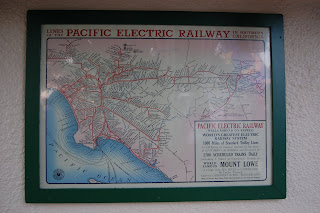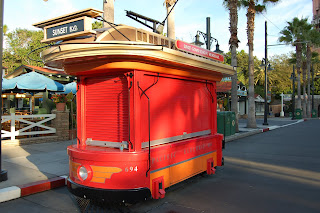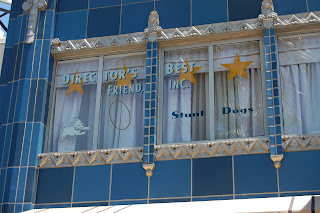Once through Disney Studio 1, the Hollywood set continues in a much more realistic fashion, with Hollywood Boulevard on the studio lot. Between the two is a small park, at the center of which stands a copy of "Partners," the statue of Walt Disney and Mickey Mouse crafted by Blaine Gibson. You'll also find a copy of the dedication of Walt Disney Studios Park, opened by then-CEO Michael Eisner on March 12, 2002:
To all who enter this studio of dreams... welcome.
Walt Disney Studios is dedicated to our timeless fascination and affection for cinema and television. Here we celebrate the art and the artistry of storytellers from Europe and around the world who create the magic. May this special place stir our own memories of the past, and our dreams of the future.
Walt Disney Studios is dedicated to our timeless fascination and affection for cinema and television. Here we celebrate the art and the artistry of storytellers from Europe and around the world who create the magic. May this special place stir our own memories of the past, and our dreams of the future.
The Hollywood Boulevard sets use an illusion of forced perspective to give the impression the buildings are taller and the street longer than they are. Seen from the point of view of Disney Studio 1, Hollywood Blvd. seems to go on for miles, all the way to the famous Hollywood sign. In reality, it's merely a handful of carefully-placed facades.
Each facade, though, is a work of art unto itself, dressed out with props and exterior details that complete the illusion. Whether it's the Deluxe Talent Agency (where hopeful starlets might go to get discovered) or Gower Books & Music (which takes its name from Gower Street in Hollywood), these look like real businesses you can step right into.
Ready for your close-up? Be sure to visit DeMille Studio for professional headshots! (Cecil B. DeMille was not only one of the greatest directors in old Hollywood, but also the subject of Norma Desmond's famous line in the film Sunset Boulevard: "Mr. DeMille, I'm ready for my close-up."
There's the well-traveled intersection of Hollywood and Vine, and nearby... Hollywood & Lime, a refreshing drink and snack station sponsored by Perrier. Typical of what would be found on a real movie studio lot, much of the food service at Walt Disney Studios Park is handled by food trucks and carts like this, all in the guise of Studio Catering.
The entire Hollywood Blvd. area of Walt Disney Studios was added to the park in 2007, both as a placemaking enhancement and to support the addition of the park's newest attraction, The Twilight Zone Tower of Terror.
A near duplicate of the Tower of Terror attraction built at Disney California Adventure, Guests in the Paris park are taken beyond the old Hollywood sets and placed right in the middle of the action in their very own episode of "The Twilight Zone."



















































